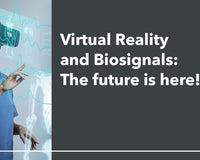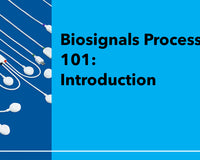Anyhow, there are also other ways to prove it and…well, if you are alive, besides your brain activity your heart is also beating 💗
Yeah, what's the catch? I can see it in my top-notch smartwatch.
Yes, you are right - your smart watch is a very good way to see your liveliness, as it reads your heart rate and your oxygen saturation. A true companion to keep showing us how alive we are day by day.
However, you can not see your whole Electrocardiogram (ECG) and get more comprehension about your heart functioning by just using a smartwatch.
Keep reading this post if you are interested in learning more about your heart.
We’ll give you some tips on how you can easily get an ECG at anytime, anywhere, without having to go to a doctor or spending a fortune on a medical device.
Step 1: Keep calm and feel your body
👉 First Question: Are you aware of your body signals?
Although, you are not able to measure anything reliable without having a proper instrument to do it, when you relax and lead our thoughts to each part of your body, for sure you’ll find the different signals your body is generating, including the biosignals (“What are Biosignals? Get started here!”).
If you would like to have a sensorial experience while exploring your own biosignals find out more on a recent scientific approach proposed by Alfaras M., et al, 2020, in “From Biodata to Somadata”.
One of the most common biosignals is the electrocardiography (ECG).
ECG is the process of producing an electrocardiogram, a record of the electrical activity of the heart. The ECG sensors can be used to extract heart rate (HR) data and other ECG features, enabling its application in a wide diversity of research fields.
Step 2: How does the Heart work? A short Physiological Overview
The heart is composed of various tissues, among that, the cardiac muscle, which can produce electrical signals that are detectable at the skin surface using an ECG sensor. The cardiac cycle includes a diastole which is the refilling of the heart chambers with blood and the systole which is the contraction and emptying of the heart chambers from blood.
The next picture illustrates each step of the cardiac cycle that leads to a new component of the ECG signal. In this case, the signal is measured between the two points B and A.

Heart Physiology and Signal generation of ECG
Check out what each 6 components of the ECG means (Rhoades & Bell, 2012; Georg Thieme Verlag KG, 2022):
(1) P-wave → represents the contraction and spread of excitation (blue) of the atria (depolarization)
(2) PQ-interval → represents the spread of excitation from the atria to the ventricle
(3) QRS complex → represents the ventricle contraction and the spread of the excitation
(4) ST-interval → represents the ventricle fully excited
(5) T-wave → represents the regression in the ventricle
(6) TP-complex → represents the unexcited atria and ventricle
This is a very short overview on how the ECG is generated, just for you to get started.
To know more, just keep tuned on our Blog Posts.
Step 3: What do I need to get started with ECG?
You will find some options in the market for the ECG signal acquisition. Your choice will, of course, rely on the budget you have available and the scope of your work.
One of the goals of this post is to drive you in the ECG signal, reason why we don’t advise you to start with the most expensive and advanced systems but rather opt for those more affordable, easy to use, easy to learn and versatile.
Within the various commercialized options you have BITalino that allow everyone to have a rapid access to their own body signals anywhere of your preference.
👉 OK, cool!! But what do I need to know, additionally?
There’s no need of having hardware or electronic knowledge on how to build a signal acquisition unit. The toolkit and sensors are ready to be used.
BITalino is an affordable, plug & play, versatile and open-source biosignals platform designed for Education & Prototyping.
For you to get started acquiring your ECG signal we built the BITalino HeartBIT Kit and a complete guide for Exploring Cardiac Signals at the Skin Surface.

Step 4: How to position the ECG sensor on the body?
There are different electrode positions to acquire ECG signals according the Einthoven leads I-III. When trying to connect the ECG by yourself you will have the opportunity to check out the effect of the different electrode positioning on the signal.
In the next image you can see an example of electrode placement for Lead-I electrode positioning, where (-) represents the negative pole (black) on right wrist, (REF) represents the reference (white) on iliac crest and (+) the positive pole (red) on left.
👉 Now it’s your turn. Get your HeartBIT!
Remember to place the electrodes in regions of low muscular activity (bones) to reduce the noise of muscular activations (movement artefacts).

Example of electrode placement for Lead-I electrode positioning Get my HeartBIT!
Step 5: How to visualize the ECG signal?
You have several options for signal visualization, including our free platform for signal acquisition and visualization OpenSignals (r)evolution.
The OpenSignals device manager you can you can select the suitable parameters for your acquisition. The suitable sampling frequency for an ECG and to detect a QRS complex ranges between 10 and 25 Hz.

ECG sample
According to Nyquist–Shannon sampling theorem the sampling frequency must be higher than two times the highest frequency observed in the waveform. This means that the sampling frequency should be at least 50Hz. To determine some ECG parameter, such as Heart Rate Variability (HRV) it is highly beneficial for the analysis to use higher sampling frequencies. In BITalino sampling frequency is fixed (e.g. 10, 100, 1000 Hz). We recommend to select 1000 Hz.
Our Exploring Cardiac Signals at the Skin Surface guide will also provides you with exercises to perform during the acquisition.
This will be helpful to better understand the changes in the signal in various situations that might occur (e.g. movement, relaxing, hold breath, etc.).
And that’s it, folks. Keep tuned, keep your heart beating ![]()
If you’re getting started don’t forget to read “How to dive in the world of biosignals?”
Author: Madalena Proença (Product manager at PLUX Biosignals)










